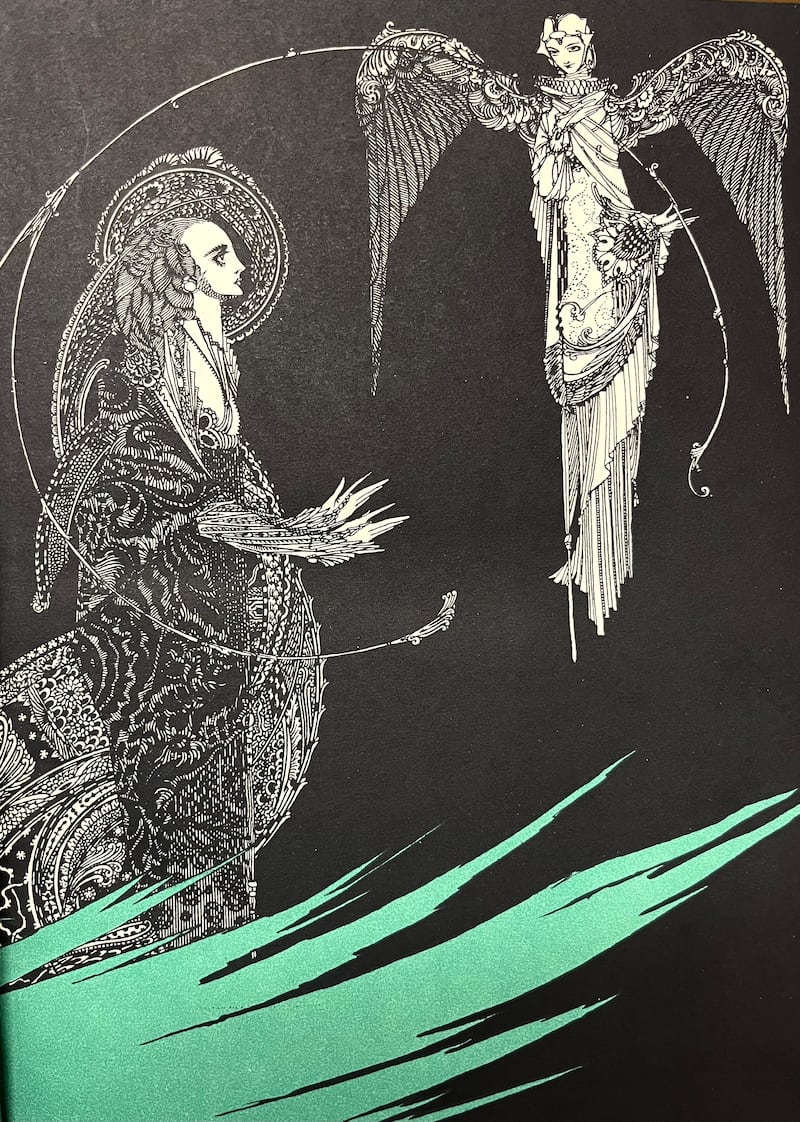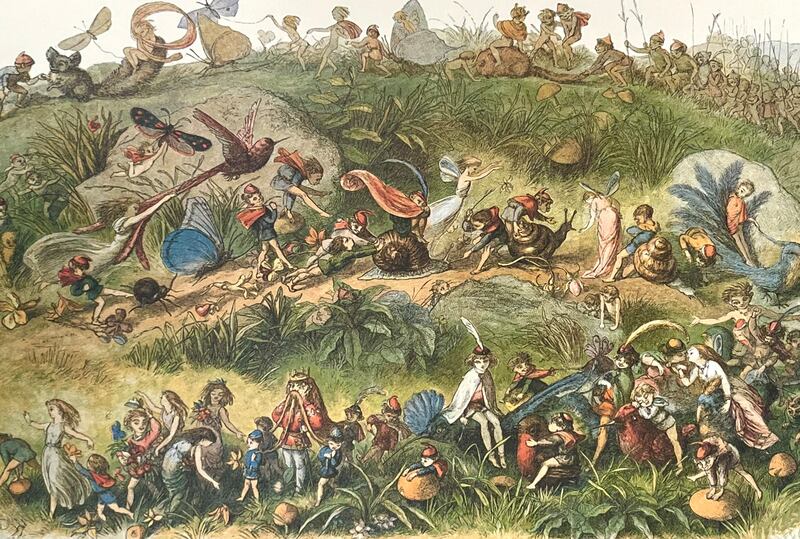Illustrated books can suffer from having the images removed, framed and resold, but many fascinating examples survive. Harry Clarke, famous for his stained-glass windows, also had a significant career in print. Having delighted children with his 1916 drawings for Hans Christian Andersen’s Fairy Tales, he went on to exercise the more gothic reaches of his incredible imagination with Edgar Allan Poe’s Tales of Mystery and Imagination, published in 1919, some 70 years after Poe’s death. Clarke provided a suitably macabre counterpoint to stories including The Murders in the Rue Morgue, and The Pit and the Pendulum. A first edition copy is for sale for €650 with Ulysses Rare Books.
Less well known are Clarke’s illustrations for Goethe’s Faust, published in 1925, following in the footsteps of French artist Eugene Delacroix, who had taken on the challenge a century previously. On seeing the Delacroix illustrations, Goethe, who died in 1832, wrote of the artist’s “more perfect imagination”, saying, “I must now admit that M. Delacroix has surpassed my own conception in certain scenes!” Clarke’s drawings, in colour and black and white, are a leap even further. A first edition of the English translation by John Anster, illustrated by Clarke, and also bearing Clarke’s signature, is for sale at De Búrca Rare Books for €1,250.

Illustrator Richard Doyle came from a very interesting family. He was son of the Irish-born political caricaturist John Doyle, and brother to Henry Doyle, first director of the National Gallery of Ireland. His nephew also happened to be Sherlock Holmes creator Arthur Conan Doyle. Despite the empirical and fastidiously factual nature of Holmes’s detective work, Conan Doyle himself had a fascination with the fairy world, and fell foul of the Cottingley Fairies hoax, when he published photographs of “fairies” made up by two young girls with paper cutouts and hatpins.

The photographs were created by Elise Wright and Frances Griffiths, who lived in Cottingley near Bradford in England. Their first fairy pictures were made in 1917, when Elsie was 16 and Frances nine. Conan Doyle used them to illustrate an article for the Strand Magazine in 1920. The five images caused a huge stir, before fading from attention until the early 1980s, when their makers finally admitted they were faked, although Frances continued to maintain that the fifth photograph was genuine.
Perhaps Conan Doyle, who had an avowed interest in mystical subjects, was influenced by the magical worlds dreamed by his uncle. Although he had no formal art training, Richard Doyle’s illustrations were hugely popular, and he also illuminated works by the Grimms and Charles Dickens. In Fairyland: A Series of Pictures from the Elf World is unusual in that the images came first, as Doyle’s drawings inspired publishers Longman, Green, Reader and Dyer to commission a poem from Irish writer William Allingham, best known perhaps as writer of the poem The Faeries, to accompany them for a book that came out in 1870. Original copies are now in such illustrious institutions as New York’s Metropolitan Museum of Art. Ulysses has a second edition from 1875 for €895, and De Búrca a more recent facsimile, in very good condition, for €375.
- Listen to our Inside Politics Podcast for the latest analysis and chat
- Sign up for push alerts and have the best news, analysis and comment delivered directly to your phone
- Find The Irish Times on WhatsApp and stay up to date











